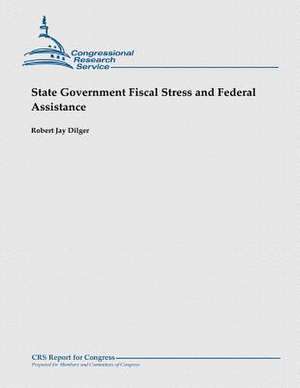State Government Fiscal Stress and Federal Assistance
Autor Robert Jay Dilgeren Limba Engleză Paperback
| Toate formatele și edițiile | Preț | Express |
|---|---|---|
| Paperback (2) | 93.84 lei 3-5 săpt. | |
| CREATESPACE – | 93.84 lei 3-5 săpt. | |
| CREATESPACE – | 99.77 lei 3-5 săpt. |
Preț: 93.84 lei
Nou
Puncte Express: 141
Preț estimativ în valută:
17.96€ • 18.80$ • 14.86£
17.96€ • 18.80$ • 14.86£
Carte disponibilă
Livrare economică 15-29 martie
Preluare comenzi: 021 569.72.76
Specificații
ISBN-13: 9781481914468
ISBN-10: 1481914464
Pagini: 36
Dimensiuni: 216 x 280 x 2 mm
Greutate: 0.11 kg
Editura: CREATESPACE
ISBN-10: 1481914464
Pagini: 36
Dimensiuni: 216 x 280 x 2 mm
Greutate: 0.11 kg
Editura: CREATESPACE
